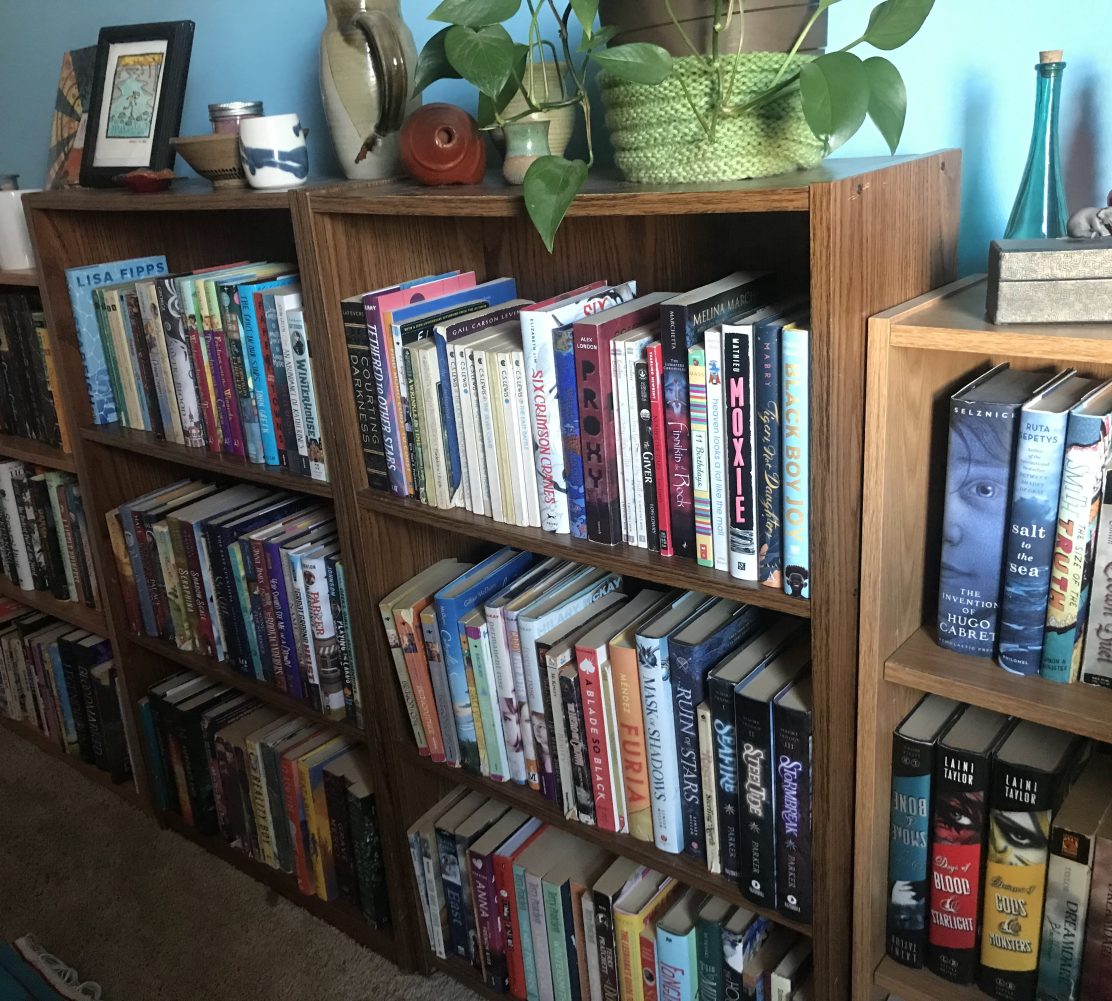
by Samira Ahmed
First sentence: “I strain to listen for boots on the pavement.”
Support your local independent bookstore: buy it there!
Review copy provided by the publisher.
Content: There are instances of mild swearing, plus a handful of f-bombs. It’s in the Teen section (grades 9+) of the bookstore, but just because of language. The themes are good for anyone, really.
It’s in the near future, and the U. S. government has decided that Muslims are a threat to the country. It started with a registry, with everyone declaring their religion. And then Muslims began to be discriminated against (well, they probably were already), and now they’re being rounded up and taken to internment camps. To keep the rest of America safe from them.
Layla and her parents are among those rounded up and sent to camp Mobius in the California desert. It’s a harrowing experience: being arrested at home and then shipped on a train to an isolated “camp” (read: prison; there aren’t cells, but they’re kept in with an electric fence) where they were expected to comply to rules and are constantly watched over by drones and guards.
Layla, however, is not okay with all this. (Fair.) In spite of her parents’ pleas to just get along, Layla decides that she needs to Do Something. So, she smuggles out articles she’s written about conditions in the camp — the Director using intimidation and force and the disappearances of other internees — to be put on blogs. She organizes protests. She makes friends with sympathetic guards on the inside who help her along with her boyfriend on the outside. They stand up for what they believe in, and resist.
I think that was the thing that was most striking to me: that resistance to authority comes from the teenagers. It probably always has. Adults get complacent, and are conditioned to not make waves. But teenagers? They’re often idealistic and want a better world. And have the courage to make it happen. And Ahmed captured that perfectly.
Yes, this book is heavy-handed: Ahmed hammers the idea that This. Is. Wrong. home in so many ways, but I think this book is meant for White People. Seriously. I am sure that so many of the themes of racism and exclusion and mistrust of the Other are already known to Muslim (and Black and Asian and Native) people. The people who need to see this are White. And probably middle class. And comfortable in their lives. (Like me.) We need to remember that inaction is the same as action. And that just because we don’t see or experience the problems doesn’t mean they’re not there.
In the end, the question I thought this book was asking was: What kind of White Person will you be? (Granted, I’m coming at it with this perspective. I’m sure others will get something different out of it.) And that’s a good question to be asking right now.
